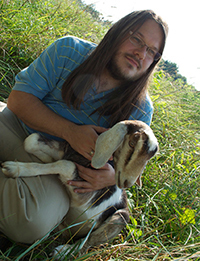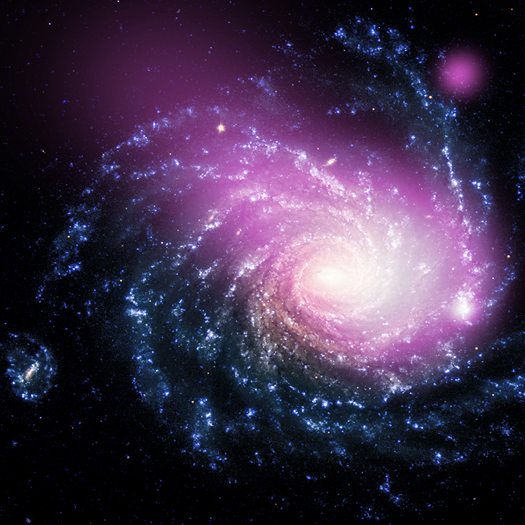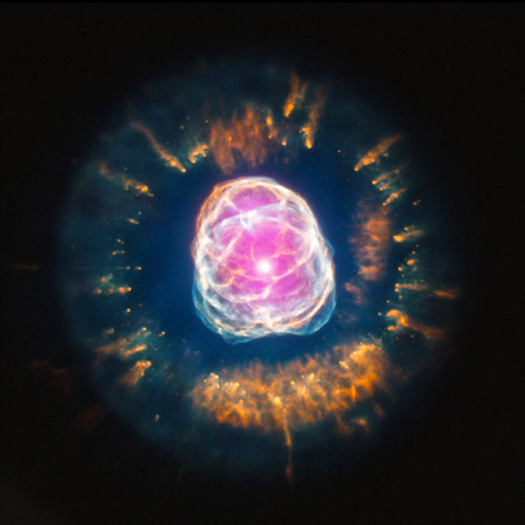A Giant Among Dwarfs

We are very pleased to welcome Jay Strader as a guest blogger today. Jay is the first author of a paper describing evidence for the densest known galaxy in the nearby universe, the subject of our latest press release. He is an assistant professor in the Department of Physics and Astronomy at Michigan State University. From 2007-2012 he was a Hubble Fellow and Menzel Fellow at the Harvard-Smithsonian Center for Astrophysics. He earned his BS in Physics and Mathematics at Duke University, and his PhD at the University of California-Santa Cruz. As his Twitter biography says (@caprastro), he loves "goats, birds, the Celtics, and globular clusters".
Explaining the basic properties of galaxies from spirals like our own Milky Way to dwarf galaxies like the Magellanic Clouds has been one of the central occupations of astronomers over the last few decades. Most astronomers now favor a picture in which galaxies form at the center of condensed "halos" of mysterious dark matter. Gas flows into these halos, cools, and forms stars and planets. The most massive galaxies are built up by mergers of smaller galaxies, which can shut off new star formation and leave behind "dead" elliptical galaxies. This basic scenario is a framework through which we can understand the formation of the known types of galaxies.
Clues to the Growth of the Colossus in Coma
A team of astronomers has discovered enormous arms of hot gas in the Coma cluster of galaxies by using NASA's Chandra X-ray Observatory and ESA's XMM-Newton. These features, which span at least half a million light years, provide insight into how the Coma cluster has grown through mergers of smaller groups and clusters of galaxies to become one of the largest structures in the Universe held together by gravity.
A new composite image, with Chandra data in pink and optical data from the Sloan Digital Sky Survey appearing in white and blue, features these spectacular arms. In this image, the Chandra data have been processed so extra detail can be seen.
Too Hot to Swallow

We are delighted to welcome Q. Daniel Wang as a guest blogger today. Daniel is the first author of a paper dissecting the X-ray-emitting gas around the center of our Galaxy, the subject of our latest press release. He is a professor in astronomy at University of Massachusetts Amherst. He was the Principal Investigator of the first large-scale Chandra and Hubble surveys of the Galactic center to explore various components of this exotic ecosystem. He recently enjoyed a four-month stay at University of Cambridge as a Beverley Sackler Distinguished Visiting astronomer, where much of the work reported in the paper was finished.
It has been known for a while that almost all massive galaxies contain a giant black hole at their centers. Most of such black holes, including the one at the center of our own Galaxy, are, however, far dimmer than quasars typically seen in the early universe. This dimness cannot simply be explained by decreasing amounts of material that the black holes could capture. Have the black holes lost their appetite? Or do they just swallow everything that is captured without much radiation? Many theories have been developed. But direct observational tests are hard to come by.
Dwarf Galaxy Caught Ramming Into a Large Spiral
Observations with NASA's Chandra X-ray Observatory have revealed a massive cloud of multimillion-degree gas in a galaxy about 60 million light years from Earth. The hot gas cloud is likely caused by a collision between a dwarf galaxy and a much larger galaxy called NGC 1232. If confirmed, this discovery would mark the first time such a collision has been detected only in X-rays, and could have implications for understanding how galaxies grow through similar collisions.
X-Ray Whispers In A Noisy Pub
We are delighted to welcome Katja Poppenhaeger as a guest blogger today. Katja is the first author of a new paper describing the first exoplanet transit ever seen in X-rays, the subject of our latest press release. Katja studied physics at Frankfurt University in Germany, followed by a PhD in astrophysics at Hamburg Observatory in Germany, before coming to Harvard-Smithsonian Center for Astrophysics (CfA) as a postdoc.
Chandra’s 14th Anniversary: Looking Back and Looking Ahead
Fourteen years ago this week, NASA's Chandra X-ray Observatory was launched into space on the space shuttle Columbia. I didn't witness this spectacular event, but I know many who did. Those who had worked on Chandra's development for many years must have experienced a powerful mixture of nerves, excitement and satisfaction.
Carnival of Space #310 at the Chandra Blog
It's the height of summer here in the Northern Hemisphere, so that means there isn't a better time for the Carnival (of Space, that is)!

Image Credit: Rrinsindika, Wikimedia Commons (Creative Commons)
Carnival of Space #310 at the Chandra Blog
It's the height of summer here in the Northern Hemisphere, so that means there isn't a better time for the Carnival (of Space, that is)!
A Gallery of Cosmic Fireworks
Note: An earlier version of this article appeared on this blog by Peter Edmonds.
Last week at the Chandra X-ray Center we celebrated July 4th a week early with this new image of cosmic fireworks. This is G1.9+0.3, the youngest remains - as seen from Earth - of any supernova in our galaxy. If gas and dust had not heavily obscured it, the supernova would have been visible from Earth just over a century ago.



